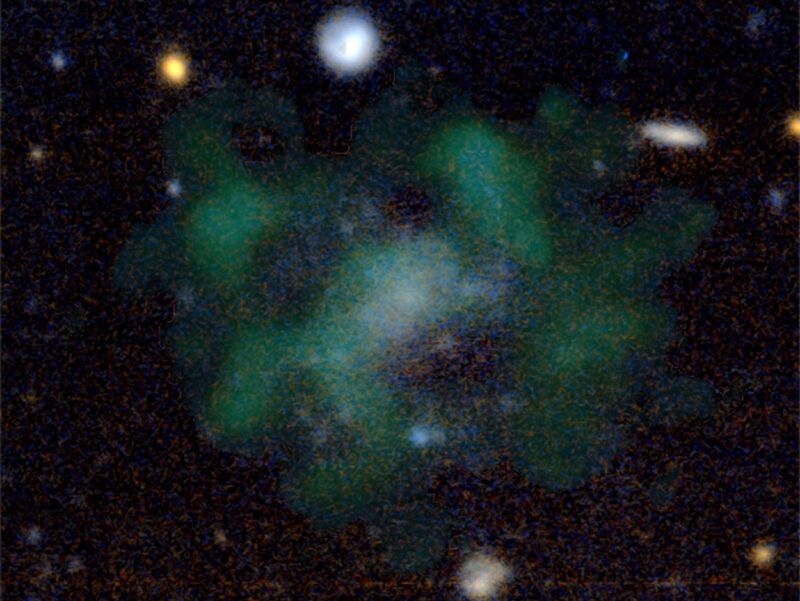
Enlarge / Astronomers mapped out the stars (shown here in blue) and gas (green) of the strange galaxy known as AGC 114905. (credit: Javier Román and Pavel Mancera Piña)
Three years ago, Filippo Fraternali and his colleagues spotted a half dozen mysteriously diffuse galaxies, which looked like sprawling cities of stars and gas. But unlike almost every other galaxy ever seen—including our own Milky Way—they didn’t seem to be enshrouded in huge masses of dark matter, which would normally hold those stellar metropolises together with their gravity. The scientists picked one to zoom in on, a modest-sized galaxy about 250,000 light-years away, and they pointed the 27 radio telescope antennas of the Very Large Array in New Mexico at it.
After gathering 40 hours’ worth of data, they mapped out the stars and gas and confirmed what the earlier snapshots had hinted at: “The dark matter content that we infer in this galaxy is much, much smaller than what you would expect,” says Fraternali, an astronomer at Kapteyn Astronomical Institute of the University of Groningen in the Netherlands. If the team or their competitors find other such galaxies, it could pose a challenge for scientists’ view of dark matter, the dominant perspective in the field for at least 20 years. Fraternali and his team published their findings in December in the Monthly Notices of the Royal Astronomical Society.
No comments:
Post a Comment